
Mătușa is the Romanian word for Aunt. I met Mătușa in 1999 when I lived next door to her sister, Maria, and her family. I felt lucky to have met them. Mătușa was not able to have children with her husband, Vasile. Every time her cow gave birth to a calf, she nursed it with a bottle and called it Florica. Sometimes they say at funerals in Maramuresh that when a childless older person dies, their life had no meaning. This exhibition is in remembrance of Mătușa because she had tremendous meaning to me.
Am întâlnit mătușa în 1999, când am trăit împreună cu familia surorii sale, Maria. M-am simțit norocos că i-am întâlnit. A murit în octombrie trecut. Mătușa nu a putut să aibă copii cu soțul ei Vasile. De fiecare dată când vaci ei a dat naștere unui vițel, ea a îngrijit-o cu o sticlă și la numit Florica. Uneori se spune la înmormântarea din Maramureș că atunci când o persoană mai în vârstă fără copil moare, viața lor nu avea nici un sens. Această expoziție îți amintește de mătușa, pentru că avea o semnificație grozavă pentru mine.

Maria and Matusa Making Easter Bread, Sarbi, Maramures, 2000
Easter marks the changing of everything. Spring demonstrates the earth’s resurrection in imitation of their Lord’s. Greetings change from “Good day, where are you going?” to the formal exchange: “Christ has risen!” followed by the response: “Truly He has risen!”
For women, it is an annual opportunity to show their artistic flair as they rival the gate carver with decorated bread.
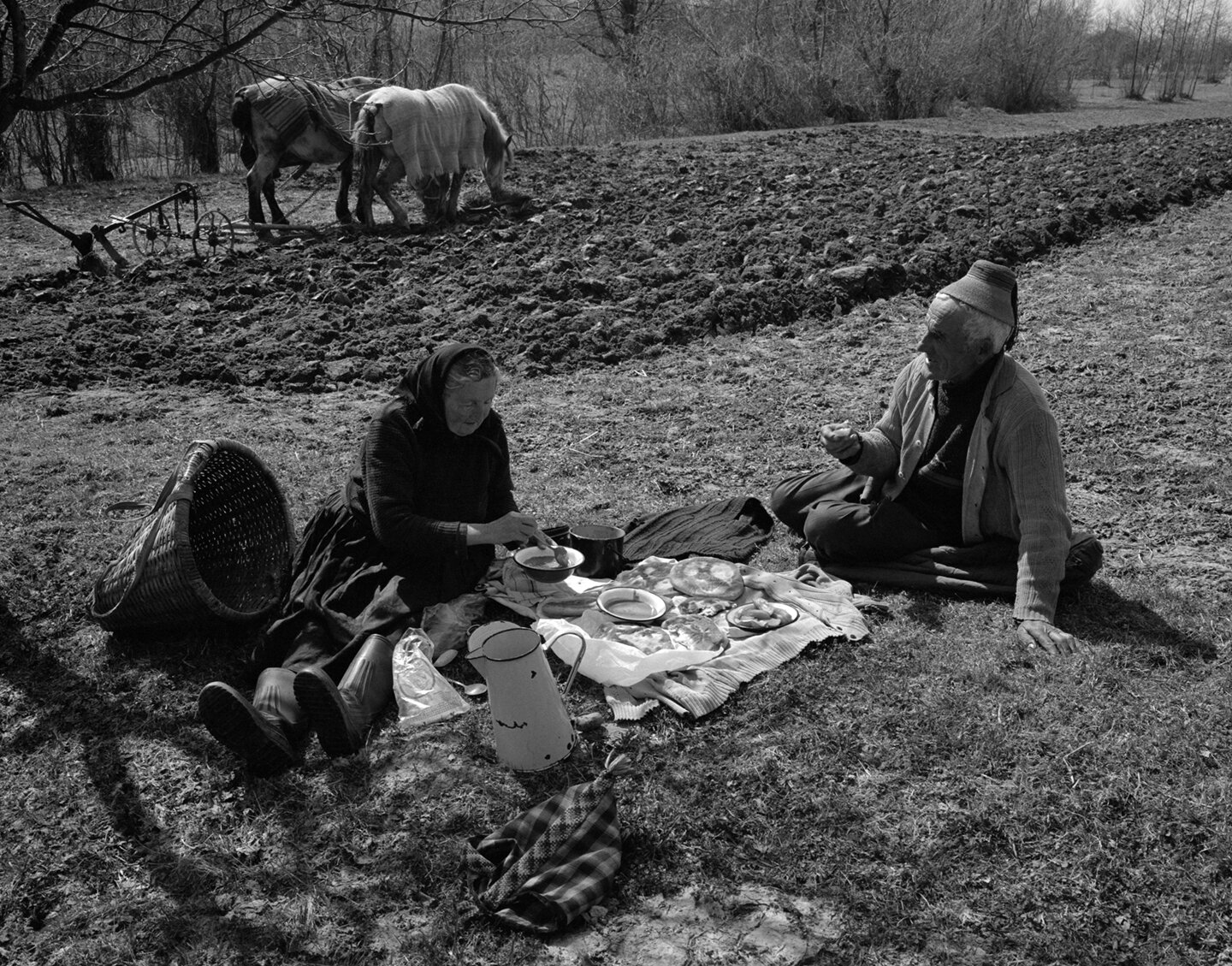
First Plowing, Sarbi, Maramures, 2000
A good man will plow more than an acre in a day.
A good woman will be sure his fried bread and soup arrive at lunchtime - still hot from home.
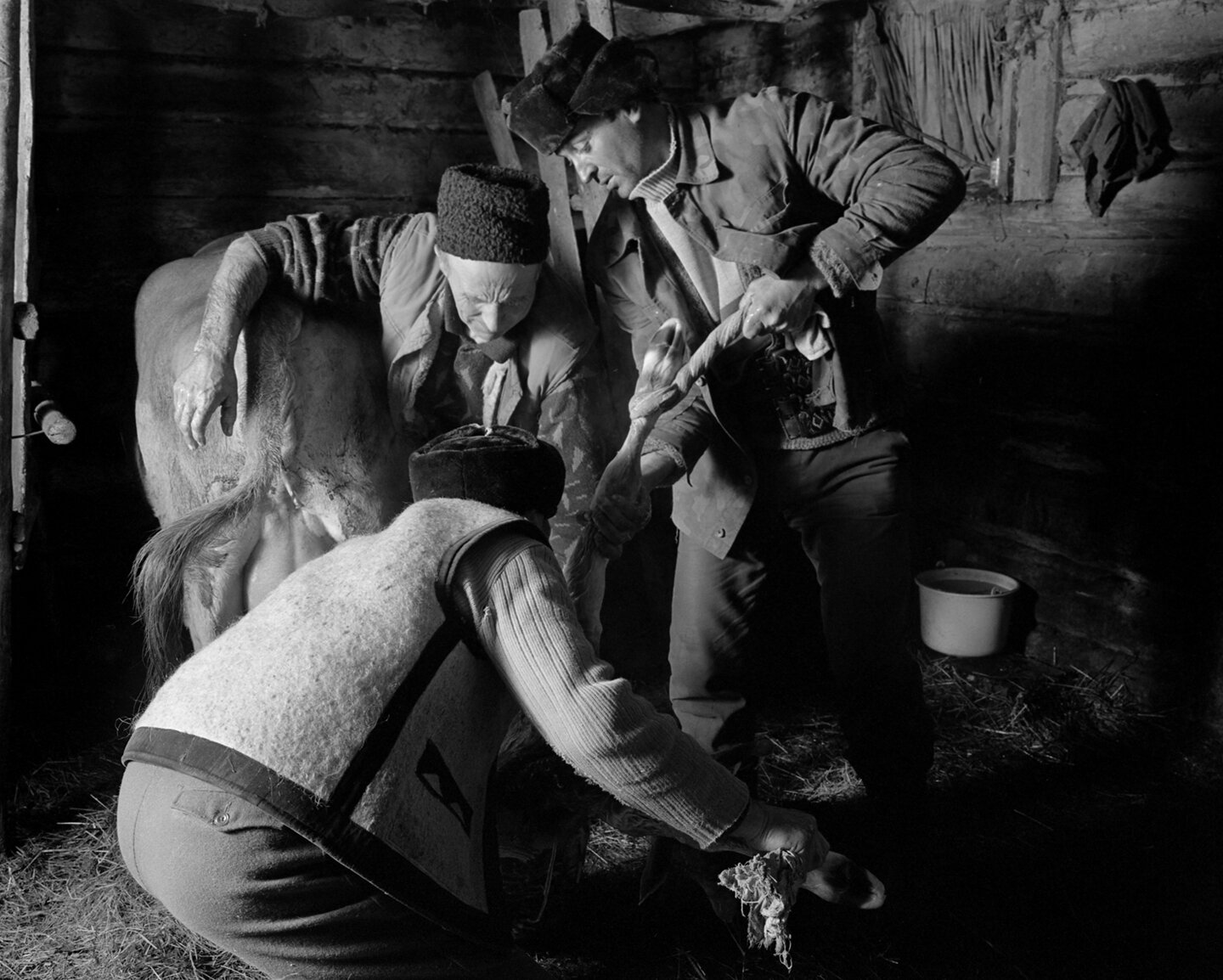
Birth of Florica, Sarbi, Maramures, 2000
While the birthing mother stands, the family pulls out the steaming calf with the help of towels twined around its hooves. It will stay with its mother for a few hours, then be fed the rest of its life by her owner Matusa.
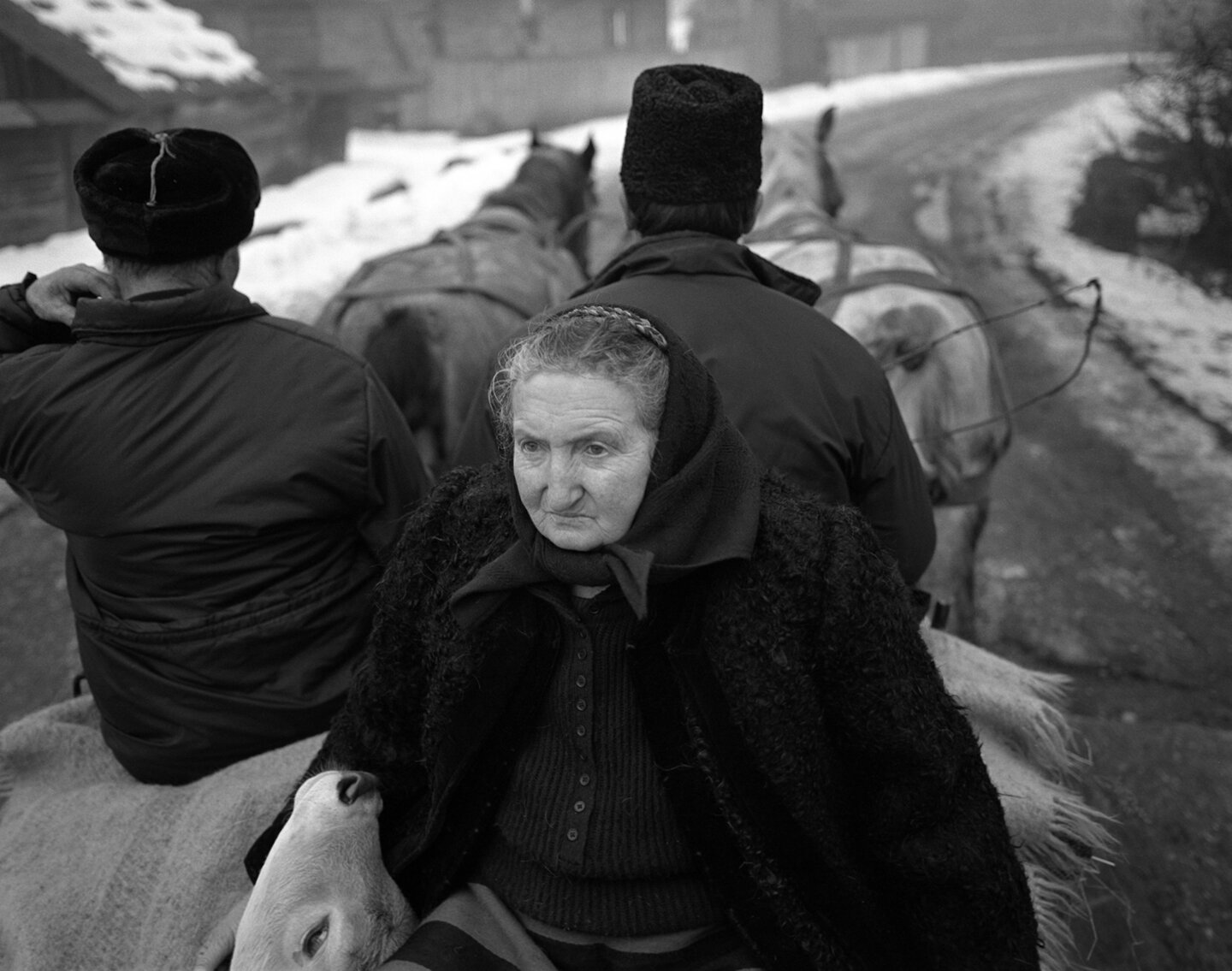
Florica to Market, Sarbi, Maramures, 2000
Even to the end, Matusa hoped that a buyer will take Florica as a milking cow, and not just for meat.
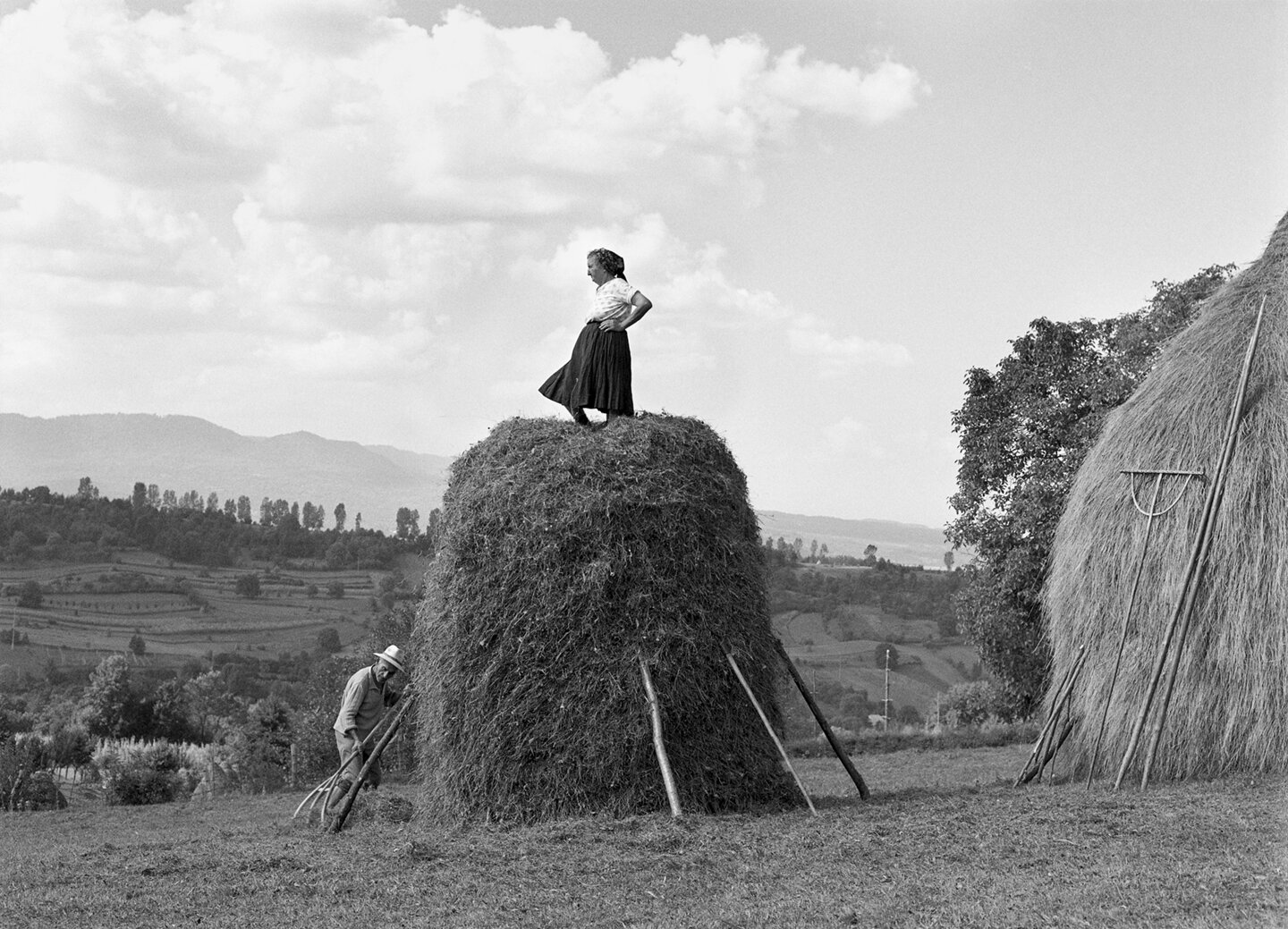
Making a Haystack, Sarbi, Maramures, 2002
Vasile tosses the dried hay up to Matusa, who tamps it down so that it can be combed to allow the rain to run off. She must always stay within grabbing distance of the haystack’s central pole, lest she fall. When they are done, he will lay a pole on the side of the haystack, and she will slide down and into his arms.

Maria, Sarbi, Maramures, 2019
Waiting for death to come so she can be with her sister Matusa.
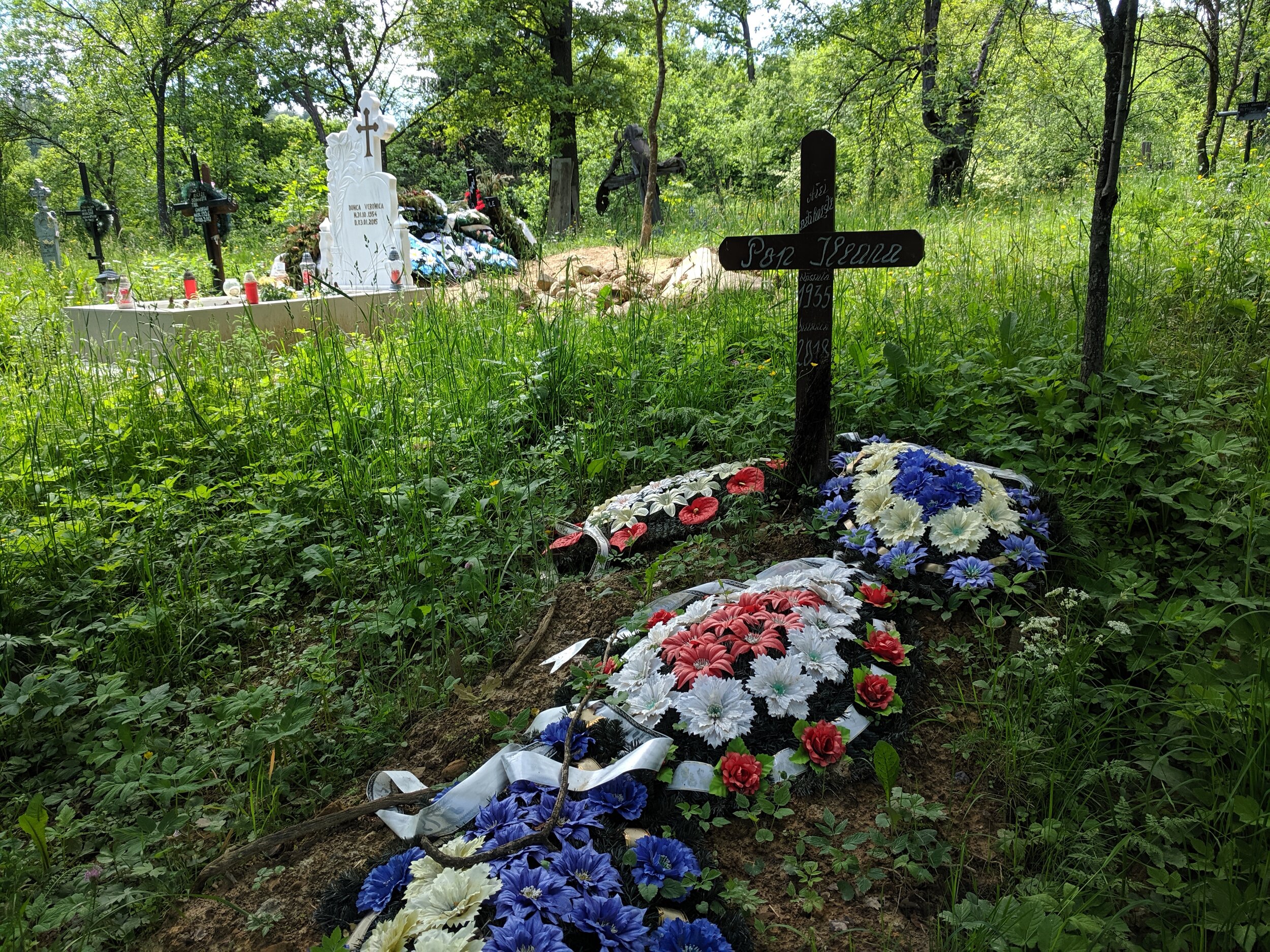
Matusa's Grave, Sarbi, Maramures, 2019
She passed on 21 September, 2018. May she rest in peace.
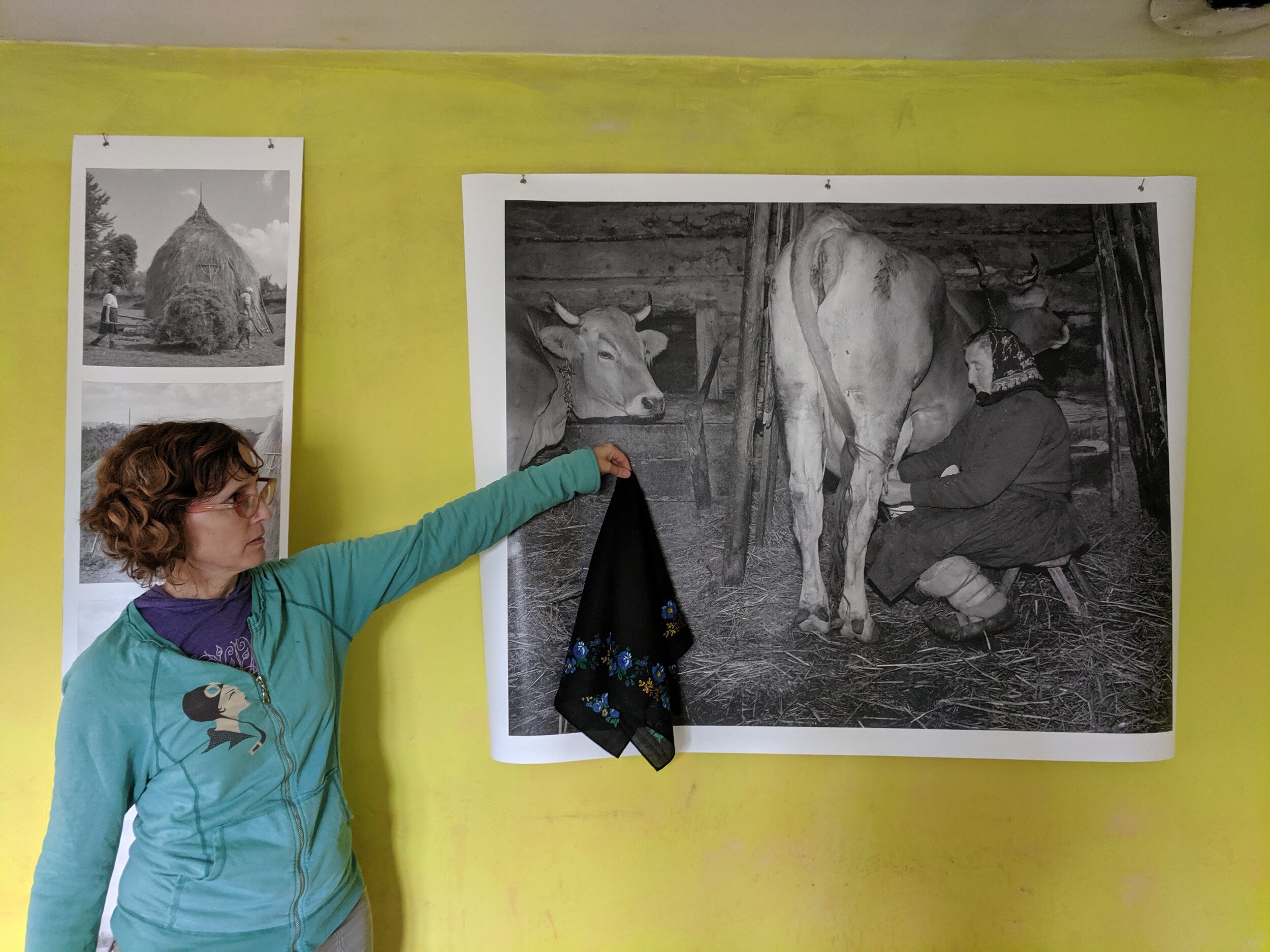
Kathleen holds up one of Matusa’s head scarves.
Attaching it to the photographic canvas print suggests the presence and absence of Matusa.
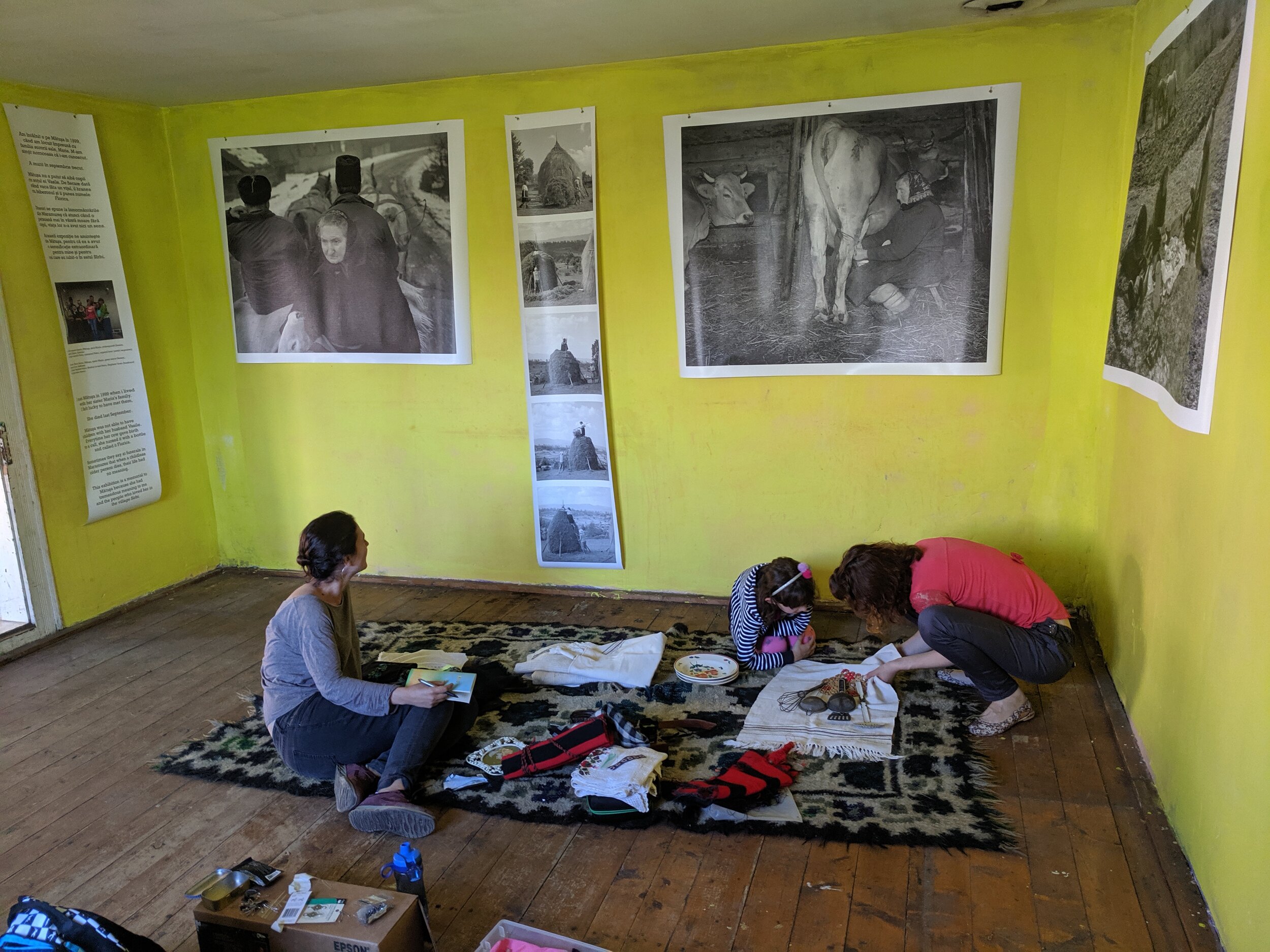
Kathleen’s friend Monica and friends from Sarbi, Ioana and her daughter, help out.
Ioana is stitching kitchen utensils on one of Matusa’s handwoven dish towels.
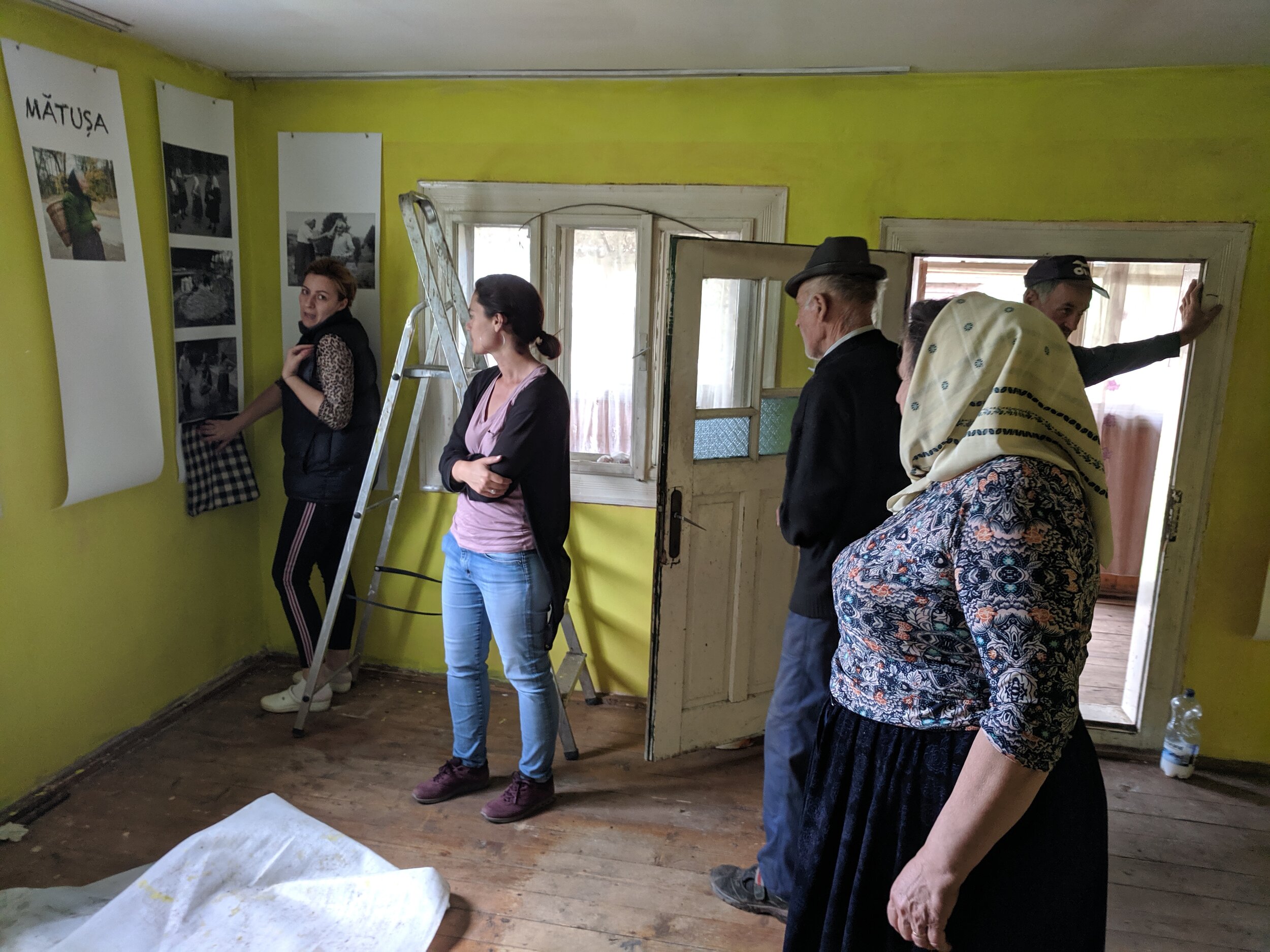
Ileana, Matusa’s great niece, helps layout the installation, while Monica and family chime in.
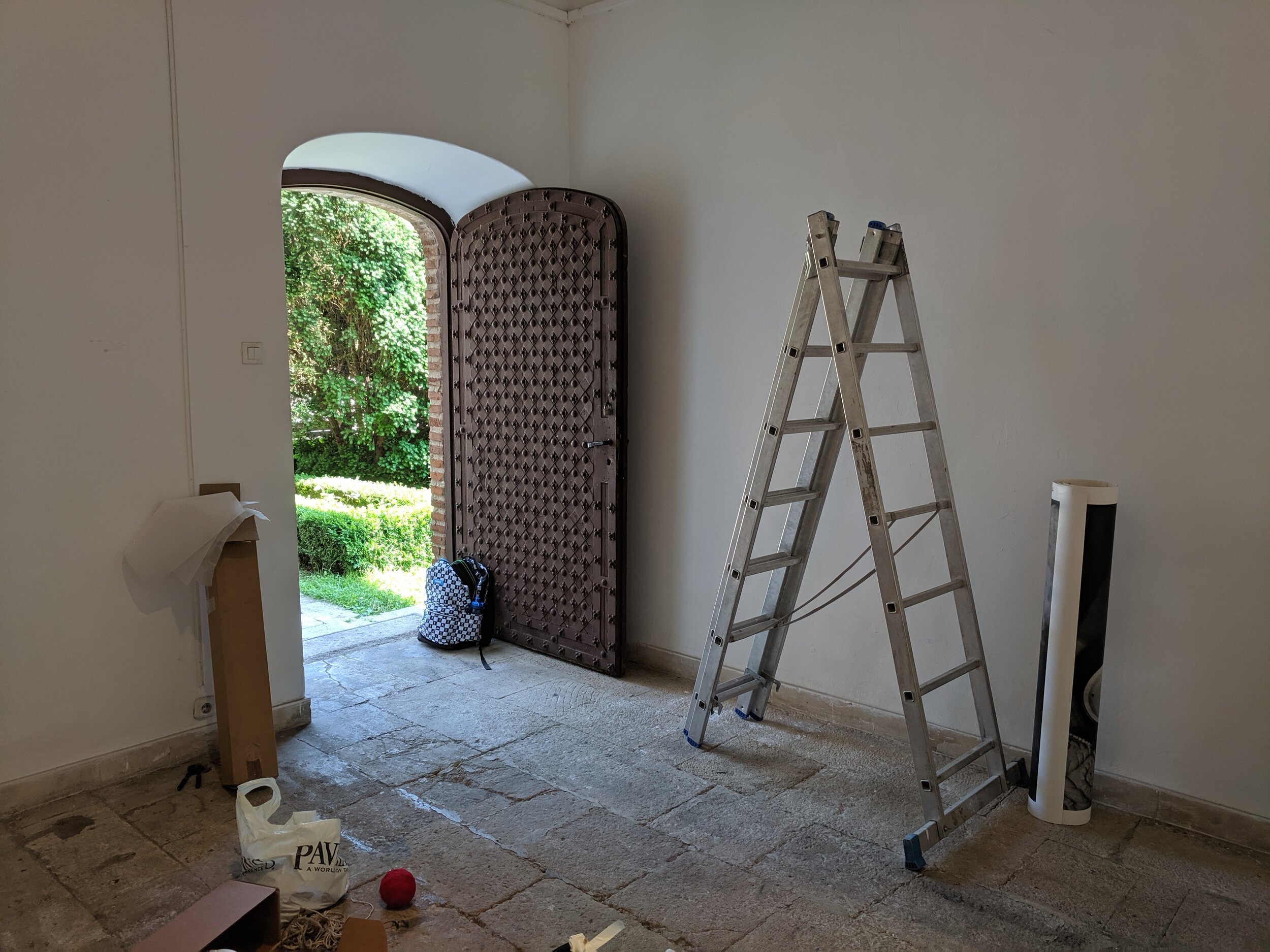
Inside the Watch Tower at the Mogosoaia Palace where the exhibition is being installed.
The modest size room was perfect for this intimate mixed media installation.
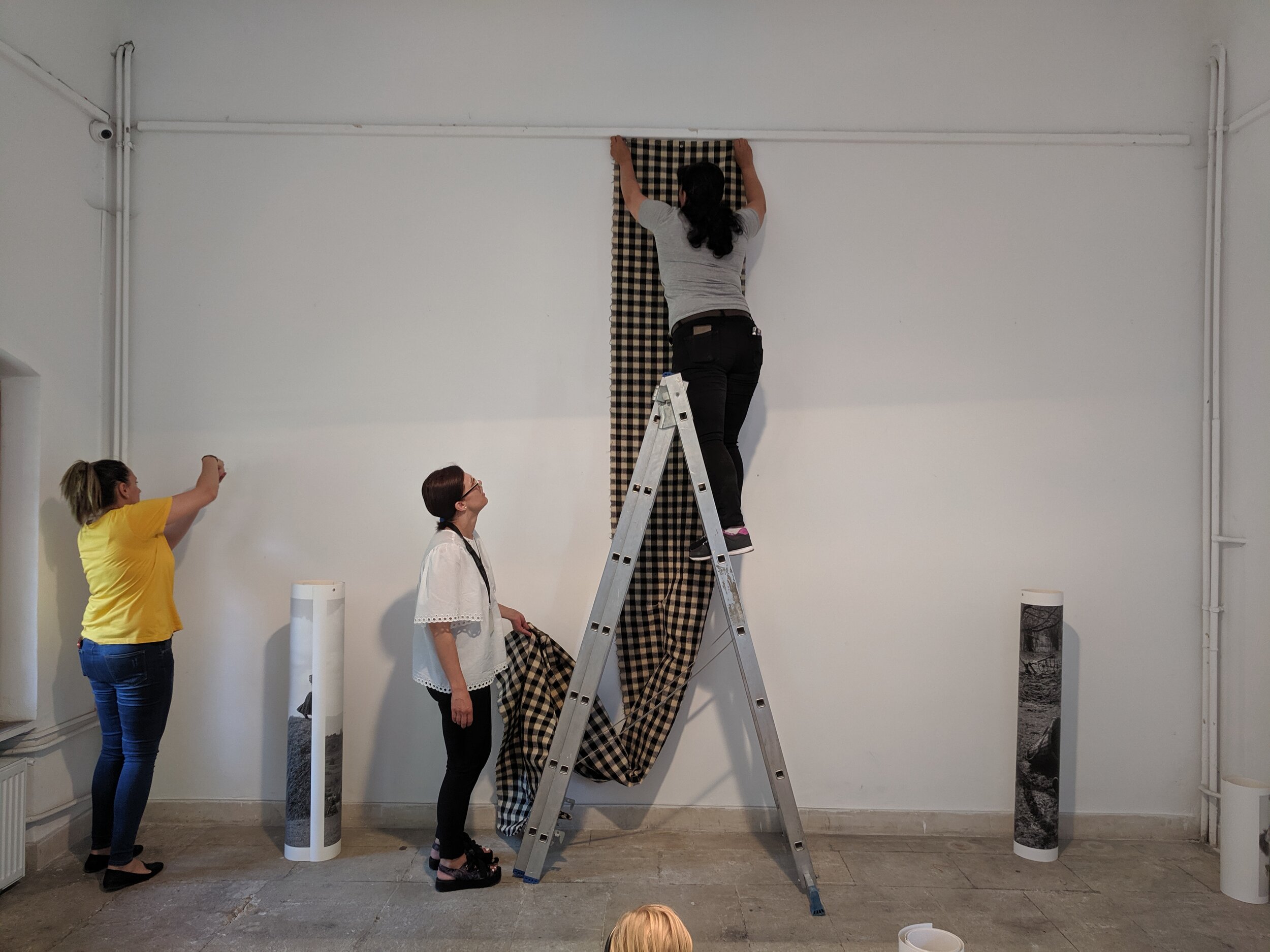
Staff at the Mogosoaia Palace help install the show. They were not only physically strong and helpful,
they also voiced their opinions on how the work should be installed. I am forever grateful.
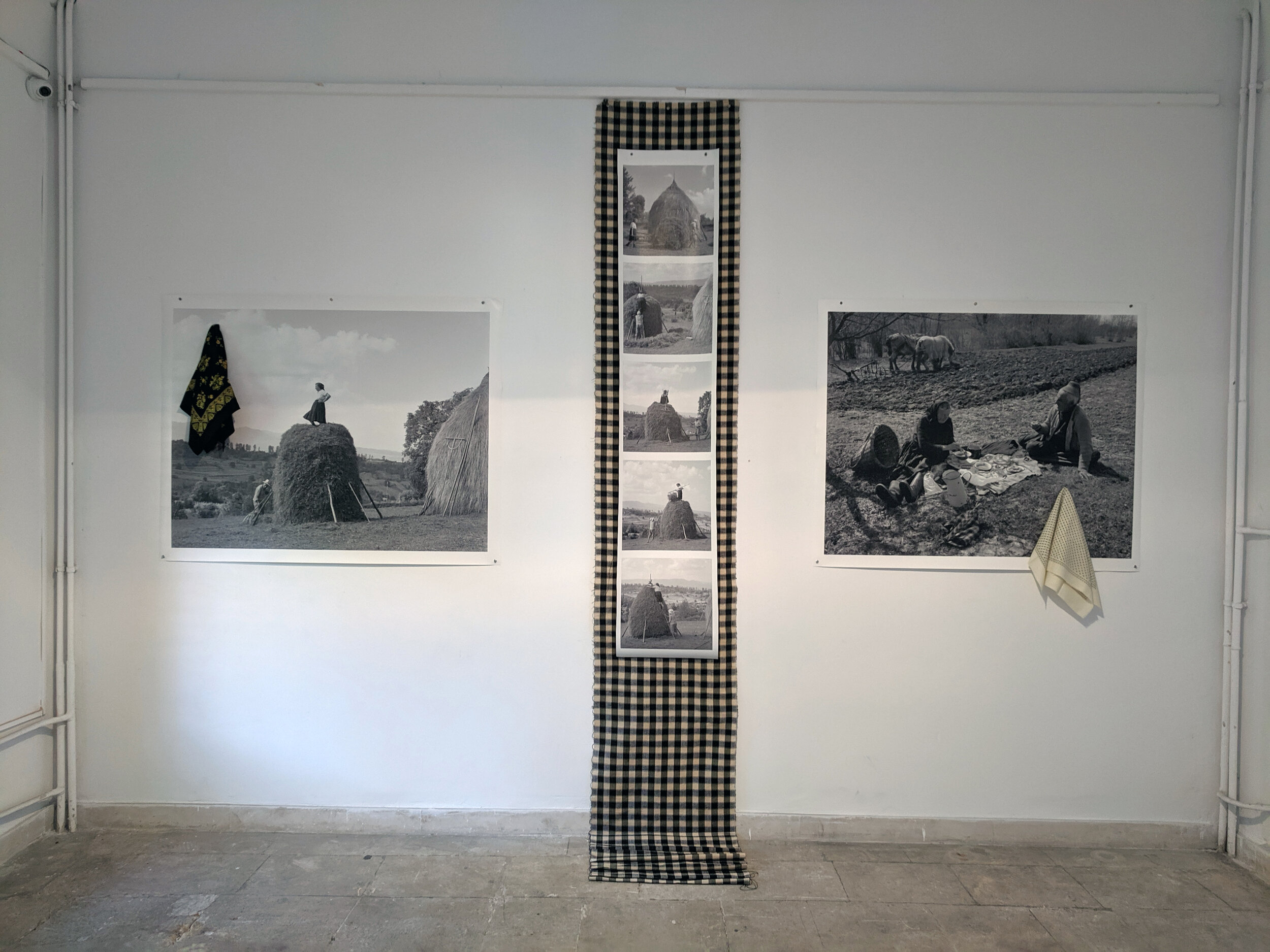
Installation of exhibition. The vertical center piece is a bolt of woolen woven fabric Matusa made for future tote bags.
These checkered totes are ubiquitous in the Maramures region.
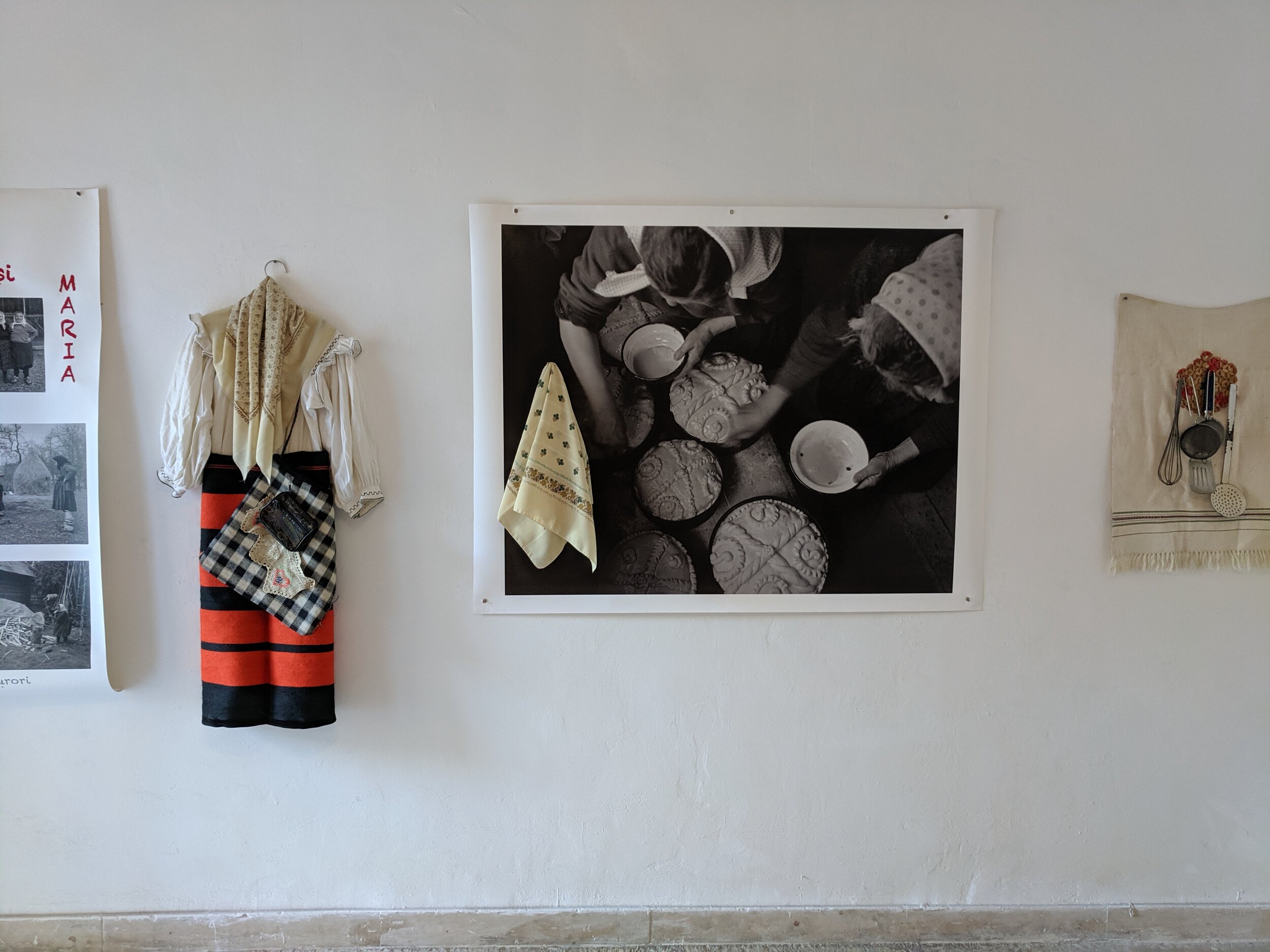

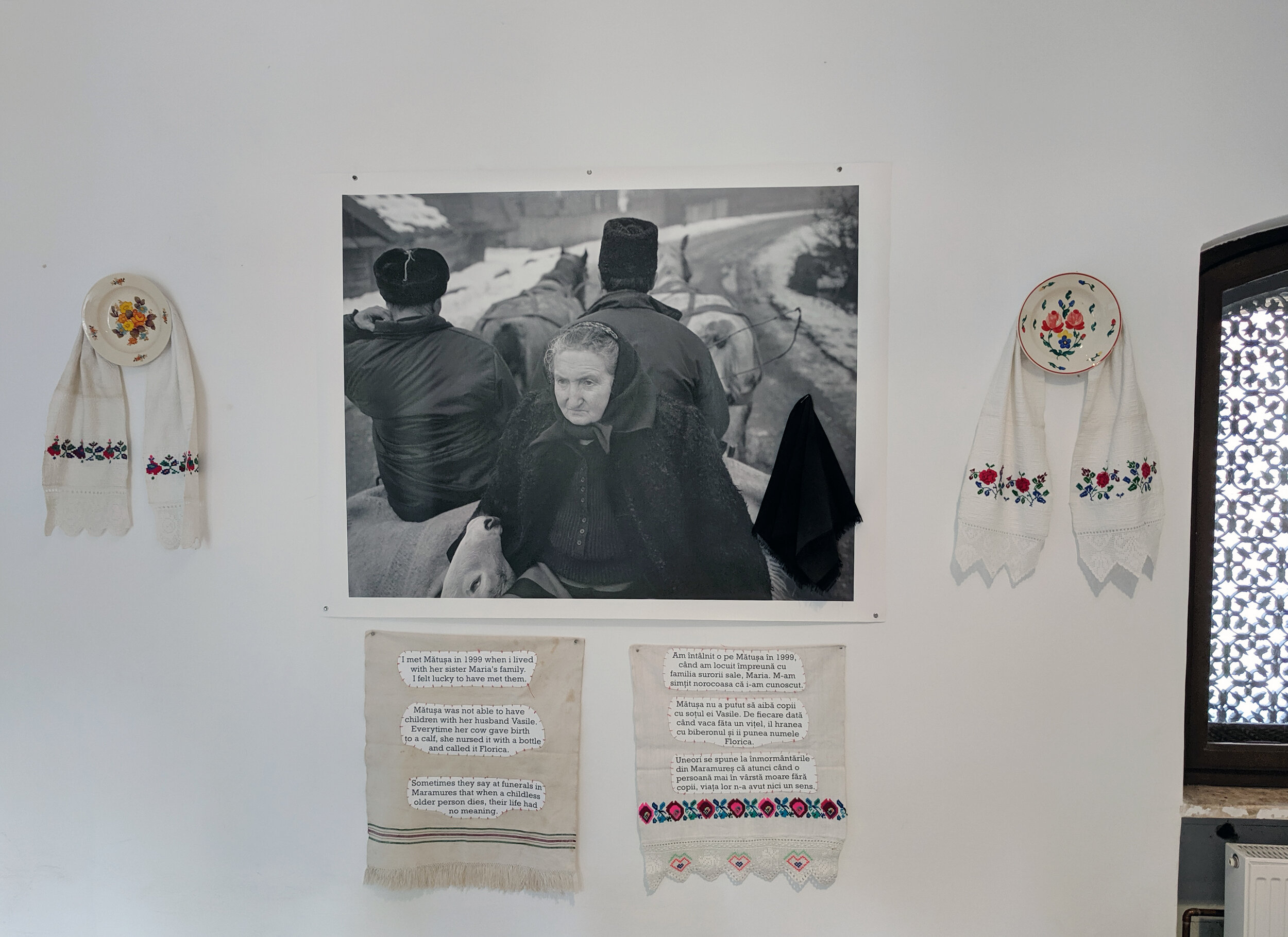

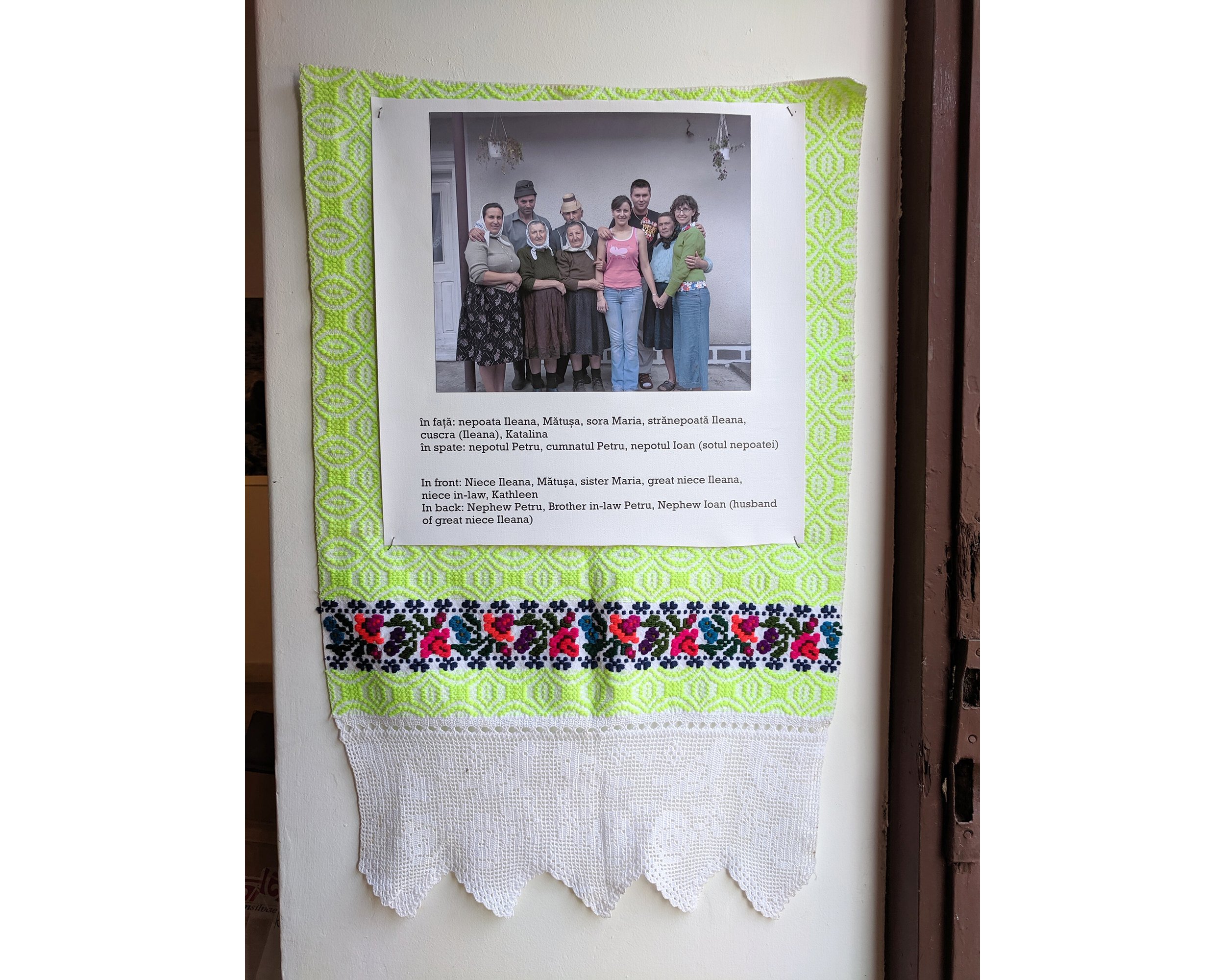
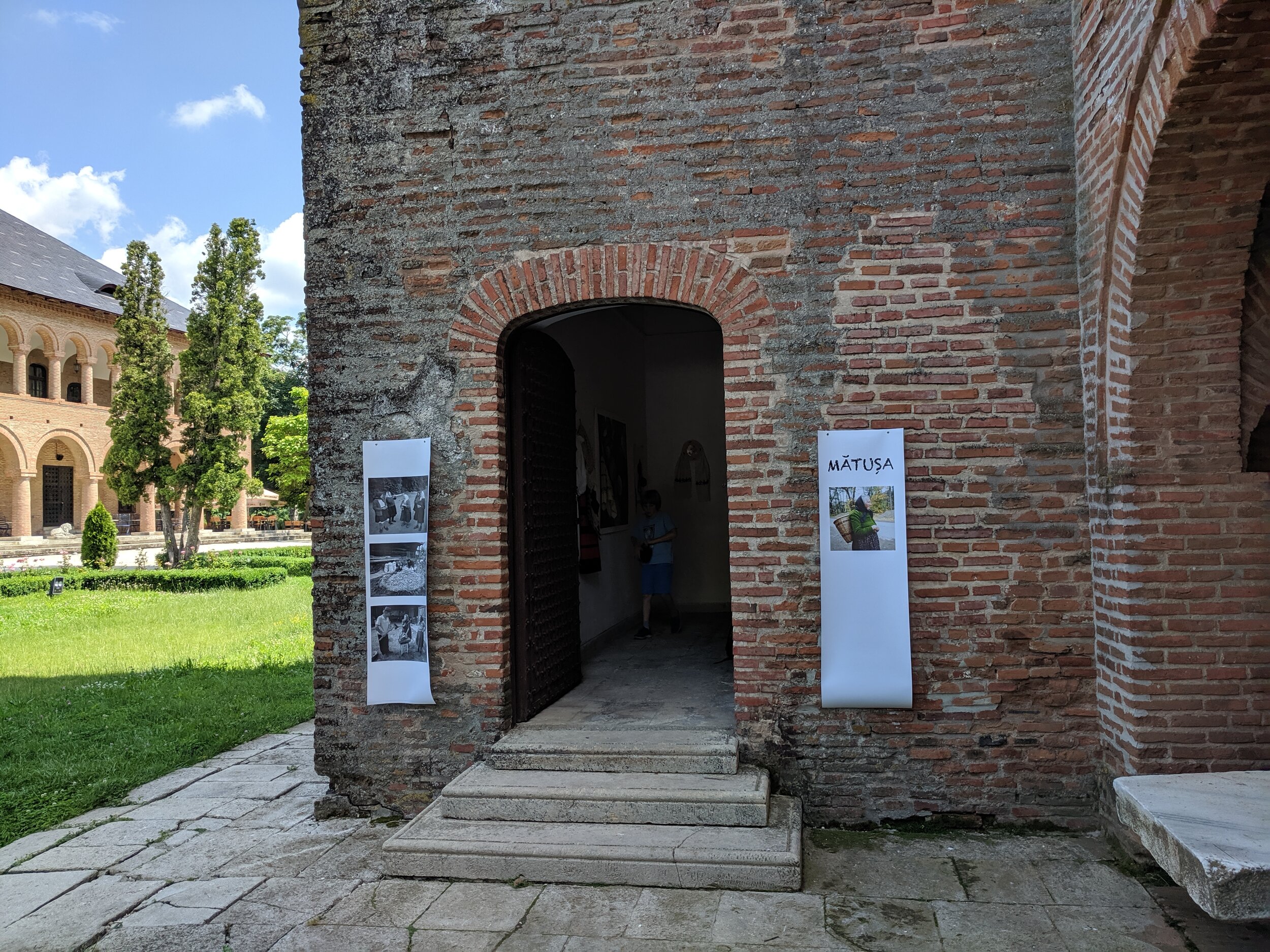
Entrance to the Watch Tower, Mogosoaia Palace

My son (on the right) enjoys playing around the palace on the day of the opening.

A bride and groom are photographed when the exhibition opening was taking place.

My son Brendan and I before the exhibition opening.

VIDEO: Monica Cure, Mogoșoaia Palace, Watch Tower, Romania, 2019
Monica Cure is an American Poet and Translator.

VIDEO Part 1: (Romanian Language), Mogosoia Palace, Watch Tower, Romania, 2019
Monica Cure is an American Poet and Translator.

VIDEO: Part 2, (Romanian Language), Mogoșoaia Palace, Romania.
Monica Cure is an American Poet and Translator.
Mătușa is the Romanian word for Aunt. I met Mătușa in 1999 when I lived next door to her sister, Maria, and her family. I felt lucky to have met them. Mătușa was not able to have children with her husband, Vasile. Every time her cow gave birth to a calf, she nursed it with a bottle and called it Florica. Sometimes they say at funerals in Maramuresh that when a childless older person dies, their life had no meaning. This exhibition is in remembrance of Mătușa because she had tremendous meaning to me.
Am întâlnit mătușa în 1999, când am trăit împreună cu familia surorii sale, Maria. M-am simțit norocos că i-am întâlnit. A murit în octombrie trecut. Mătușa nu a putut să aibă copii cu soțul ei Vasile. De fiecare dată când vaci ei a dat naștere unui vițel, ea a îngrijit-o cu o sticlă și la numit Florica. Uneori se spune la înmormântarea din Maramureș că atunci când o persoană mai în vârstă fără copil moare, viața lor nu avea nici un sens. Această expoziție îți amintește de mătușa, pentru că avea o semnificație grozavă pentru mine.
Maria and Matusa Making Easter Bread, Sarbi, Maramures, 2000
Easter marks the changing of everything. Spring demonstrates the earth’s resurrection in imitation of their Lord’s. Greetings change from “Good day, where are you going?” to the formal exchange: “Christ has risen!” followed by the response: “Truly He has risen!”
For women, it is an annual opportunity to show their artistic flair as they rival the gate carver with decorated bread.
First Plowing, Sarbi, Maramures, 2000
A good man will plow more than an acre in a day.
A good woman will be sure his fried bread and soup arrive at lunchtime - still hot from home.
Birth of Florica, Sarbi, Maramures, 2000
While the birthing mother stands, the family pulls out the steaming calf with the help of towels twined around its hooves. It will stay with its mother for a few hours, then be fed the rest of its life by her owner Matusa.
Florica to Market, Sarbi, Maramures, 2000
Even to the end, Matusa hoped that a buyer will take Florica as a milking cow, and not just for meat.
Making a Haystack, Sarbi, Maramures, 2002
Vasile tosses the dried hay up to Matusa, who tamps it down so that it can be combed to allow the rain to run off. She must always stay within grabbing distance of the haystack’s central pole, lest she fall. When they are done, he will lay a pole on the side of the haystack, and she will slide down and into his arms.
Maria, Sarbi, Maramures, 2019
Waiting for death to come so she can be with her sister Matusa.
Matusa's Grave, Sarbi, Maramures, 2019
She passed on 21 September, 2018. May she rest in peace.
Kathleen holds up one of Matusa’s head scarves.
Attaching it to the photographic canvas print suggests the presence and absence of Matusa.
Kathleen’s friend Monica and friends from Sarbi, Ioana and her daughter, help out.
Ioana is stitching kitchen utensils on one of Matusa’s handwoven dish towels.
Ileana, Matusa’s great niece, helps layout the installation, while Monica and family chime in.
Inside the Watch Tower at the Mogosoaia Palace where the exhibition is being installed.
The modest size room was perfect for this intimate mixed media installation.
Staff at the Mogosoaia Palace help install the show. They were not only physically strong and helpful,
they also voiced their opinions on how the work should be installed. I am forever grateful.
Installation of exhibition. The vertical center piece is a bolt of woolen woven fabric Matusa made for future tote bags.
These checkered totes are ubiquitous in the Maramures region.
Entrance to the Watch Tower, Mogosoaia Palace
My son (on the right) enjoys playing around the palace on the day of the opening.
A bride and groom are photographed when the exhibition opening was taking place.
My son Brendan and I before the exhibition opening.
VIDEO: Monica Cure, Mogoșoaia Palace, Watch Tower, Romania, 2019
Monica Cure is an American Poet and Translator.
VIDEO Part 1: (Romanian Language), Mogosoia Palace, Watch Tower, Romania, 2019
Monica Cure is an American Poet and Translator.
VIDEO: Part 2, (Romanian Language), Mogoșoaia Palace, Romania.
Monica Cure is an American Poet and Translator.



























